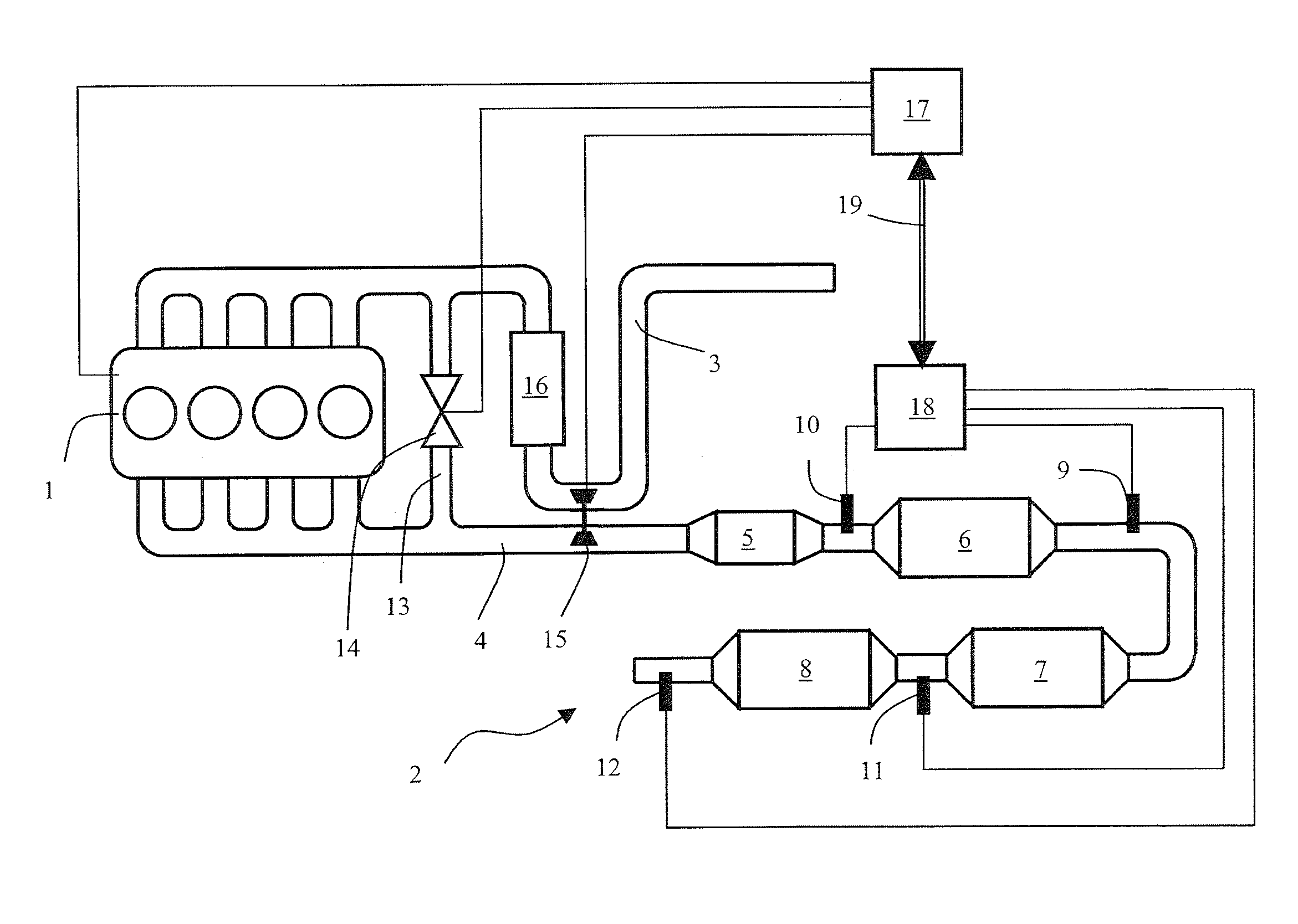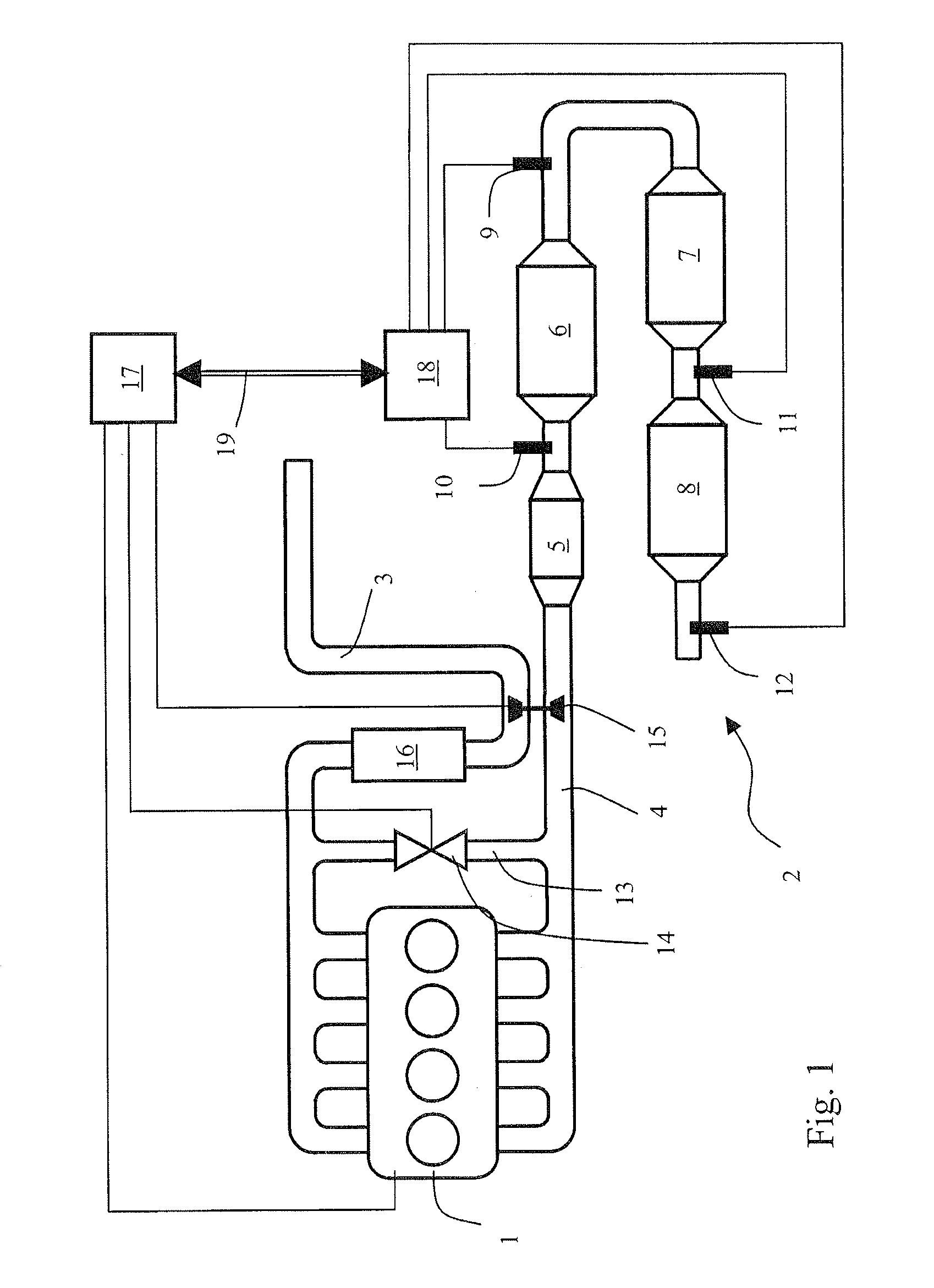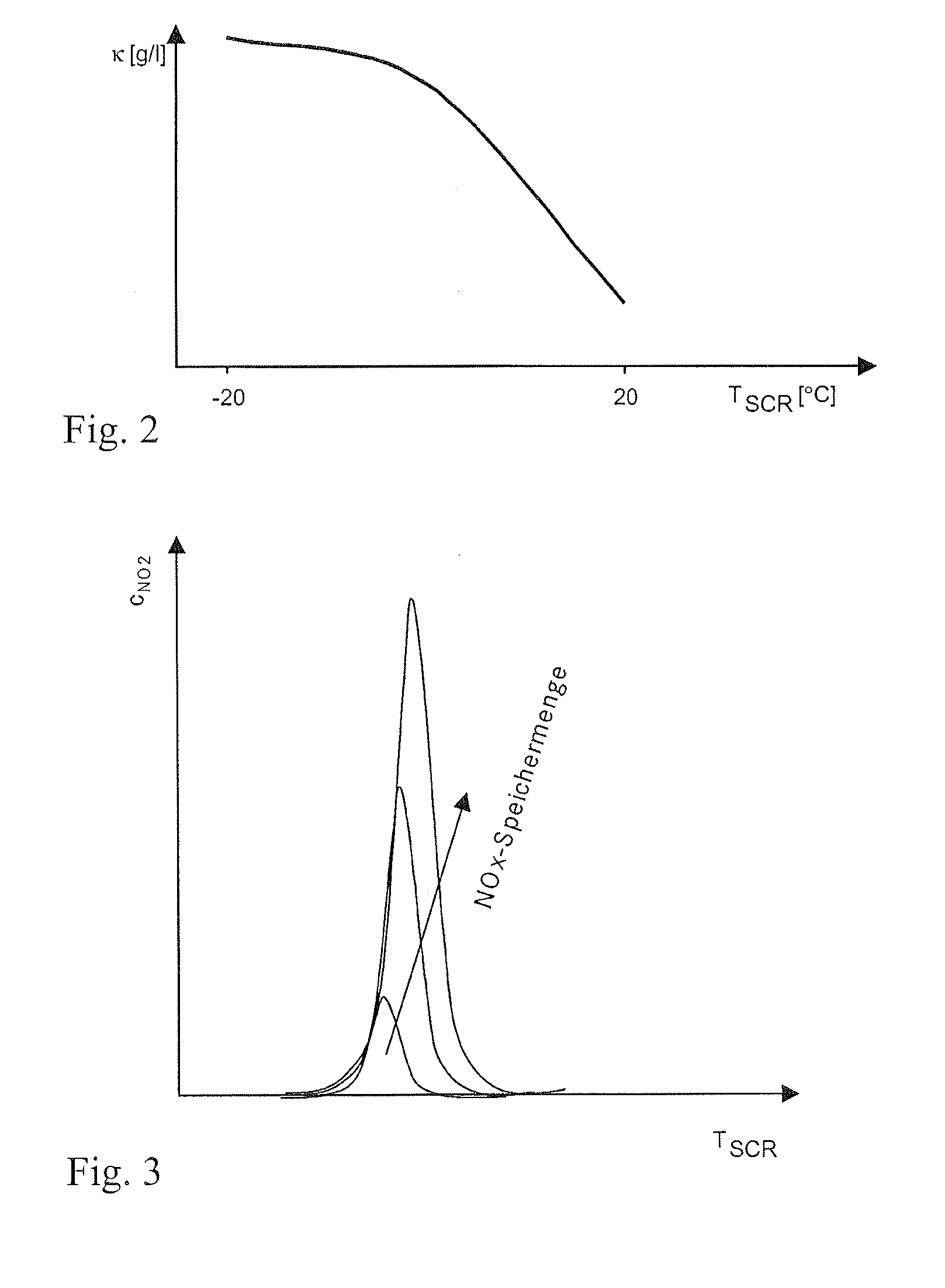Method for the operation of an internal combustion engine comprising an emission control system that includes an SCR catalyst
a technology of scr catalyst and exhaust gas cleaning system, which is applied in the direction of electrical control, process and machine control, etc., can solve the problems of high desorption rate, high desorption rate, and high emission of particularly damaging nitrogen dioxide, so as to avoid excessive fuel consumption, reduce the temperature of the scr catalyst, and avoid high load of scr catalys
- Summary
- Abstract
- Description
- Claims
- Application Information
AI Technical Summary
Benefits of technology
Problems solved by technology
Method used
Image
Examples
Embodiment Construction
[0022]FIG. 1 schematically shows an advantageous embodiment of a system of an internal combustion engine 1 and an exhaust gas cleaning system 2 for a motor vehicle, not shown. The internal combustion engine 1 is presently designed as a directly injecting air-compressing internal combustion engine according to the piston principle, called Diesel engine in the following in a simplified manner. An assigned fuel injection system (not shown), is preferably designed as a so-called common rail system with an adjustable rail pressure or fuel injection pressure.
[0023]A combustion chamber with one or two inlet and outlet valves, a glow plug and a fuel injector and one or several inlet channels for the combustion air are respectively assigned to the cylinders of the Diesel engine 1, which is not shown in detail. The fuel injectors are thereby provided with adjustable injection amounts for carrying out multiple injections. The inlet and outlet valves can preferably be operated with adjustable c...
PUM
 Login to View More
Login to View More Abstract
Description
Claims
Application Information
 Login to View More
Login to View More - R&D
- Intellectual Property
- Life Sciences
- Materials
- Tech Scout
- Unparalleled Data Quality
- Higher Quality Content
- 60% Fewer Hallucinations
Browse by: Latest US Patents, China's latest patents, Technical Efficacy Thesaurus, Application Domain, Technology Topic, Popular Technical Reports.
© 2025 PatSnap. All rights reserved.Legal|Privacy policy|Modern Slavery Act Transparency Statement|Sitemap|About US| Contact US: help@patsnap.com



